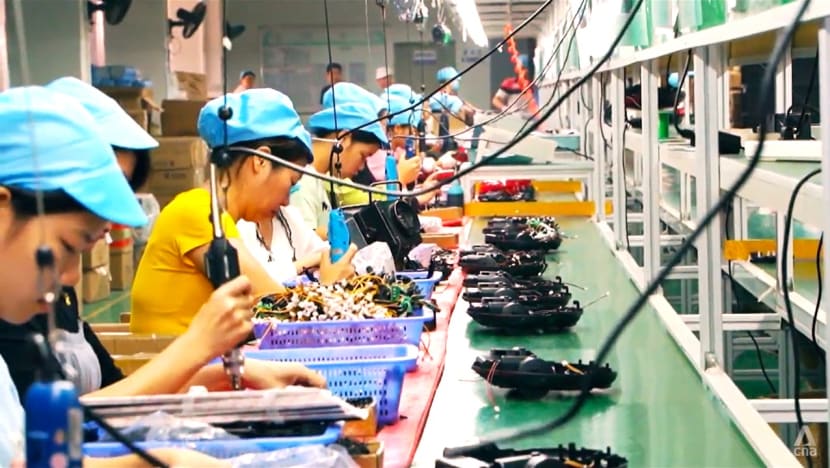CNA Explains: What is the ‘Made in China 2025’ policy and why is it making the West so uneasy?
China has dropped any reference of the contentious "Made in China 2025" slogan from official documents, but the policy to become a global tech powerhouse is still alive and kicking, said observers.


This audio is generated by an AI tool.
China rolled out the ambitious “Made in China 2025” master plan with considerable fanfare in 2015, positioning itself to become a more technology-intensive powerhouse.
However, the result of that push has raised concerns in the West.
What is the aim of the policy?
The aim of the 10-year blueprint is to shift gears from churning out low-end products to becoming a global heavyweight in high-tech industries.
The world's second-largest economy hopes to bridge the technology gap with the West, by promoting Chinese manufacturers in the global market and reducing its dependency on imported tech.
The state-led policy targets 10 key high-tech sectors, such as electric cars, telecommunications, robotics, and artificial intelligence systems.
Under this, government subsidies, including low interest loans and tax breaks, are directed at favoured high-tech companies such as electric vehicle manufacturers and chipmakers.
China is investing heavily into its endeavours, said Professor Tomoo Marukawa of the University of Tokyo’s Institute of Social Science.
“The government investments have been quite successful in fact. They're getting returns,” he added.
China has even set some bold targets.
By 2025, the country plans to achieve 70 per cent self-sufficiency in high-tech industries. By 2049, the 100th anniversary of the establishment of the People’s Republic of China, it is gunning to be a global manufacturing powerhouse.
“It is stipulated that by the year 2049, China will be the frontrunner in the global manufacturing industries,” Prof Marukawa, who monitors developments in the Chinese economy, told CNA’s East Asia Tonight on Thursday (May 9).
“So does that mean that China is going to take over the US or will it be on a par with the US? That question has never been answered, but I think at least the Chinese authorities think that they will be on par with the US.”
Why all the fuss?
As China's economy starts to slow down, its focus on these sectors may propel growth.
But critics are raising eyebrows because the master plan leans heavily on state support, and creates an uneven playing field for foreign businesses.
Governments around the world have expressed their fears, as the policy undermines adherence to international trade practices and poses a security risk.
The initiative has provoked intense anxieties from the United States, for instance.
Washington sees China as a tech powerhouse nipping at its heels, sparking a trade war over what it sees as unfair economic policies with a new battleground found in the AI sector.
As a result, China has faced more hurdles from Western countries in the tech sector, from tighter controls on imports to hefty tariffs and less investment.
How much progress has China made towards its goal?
Facing heightened international scrutiny, China started to dial things back.
In 2019, Beijing began dropping all mentions of the industrial strategy from its official documents.
However, observers said the policy is still alive and kicking, adding that China will not abandon its pursuit of developing advanced technology.
Despite downplaying the “Made in China 2025” slogan, it continues to pump in subsidies to keep the wheels turning for automakers, chip producers, and other high-tech players.
Dr Wang Huiyao, founder and president of Beijing-based think tank Center for China and Globalization, said this kind of “planning exercise” is “very useful” given that China contributes more than one-third of the global gross domestic product (GDP) growth.
“China always has some kind of planning,” he added.
Observers said while the hype may have quietened down a bit, the tech race between China and the West is far from over.
It is unclear how much progress China has made because “the goal in this policy is quite vague”, said Prof Marukawa, noting that China has a weak semiconductor industry.
“China is lagging behind the frontrunners in the semiconductor industry. But in other sectors such as, for example, electric vehicles (and) new energy, China has made great progress.
“Also, what is quite often neglected is that the focus of this Made in China policy is on the basic components or basic materials, so the actual target is to strengthen the basic capability of the industries,” Prof Marukawa added.



















